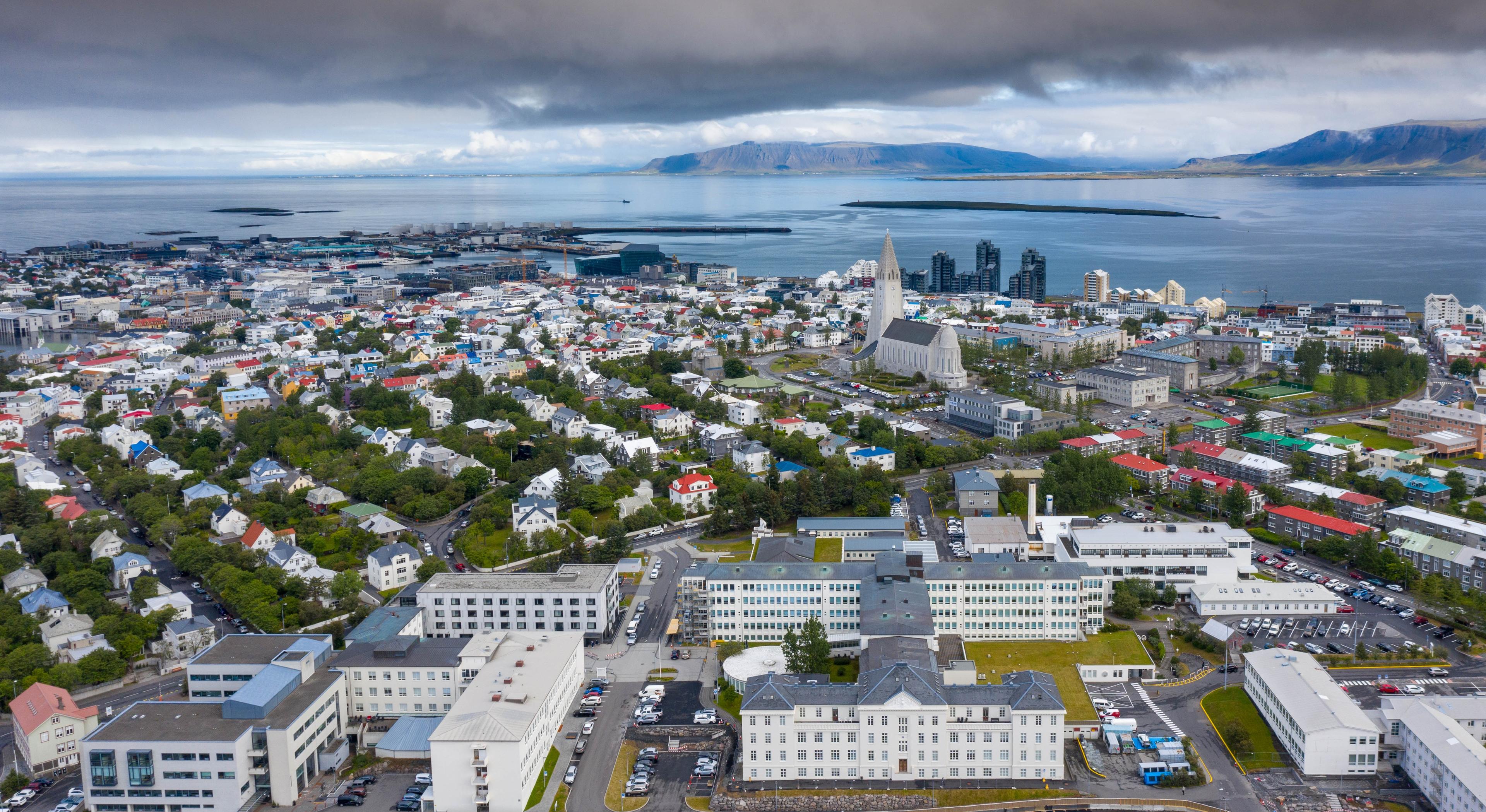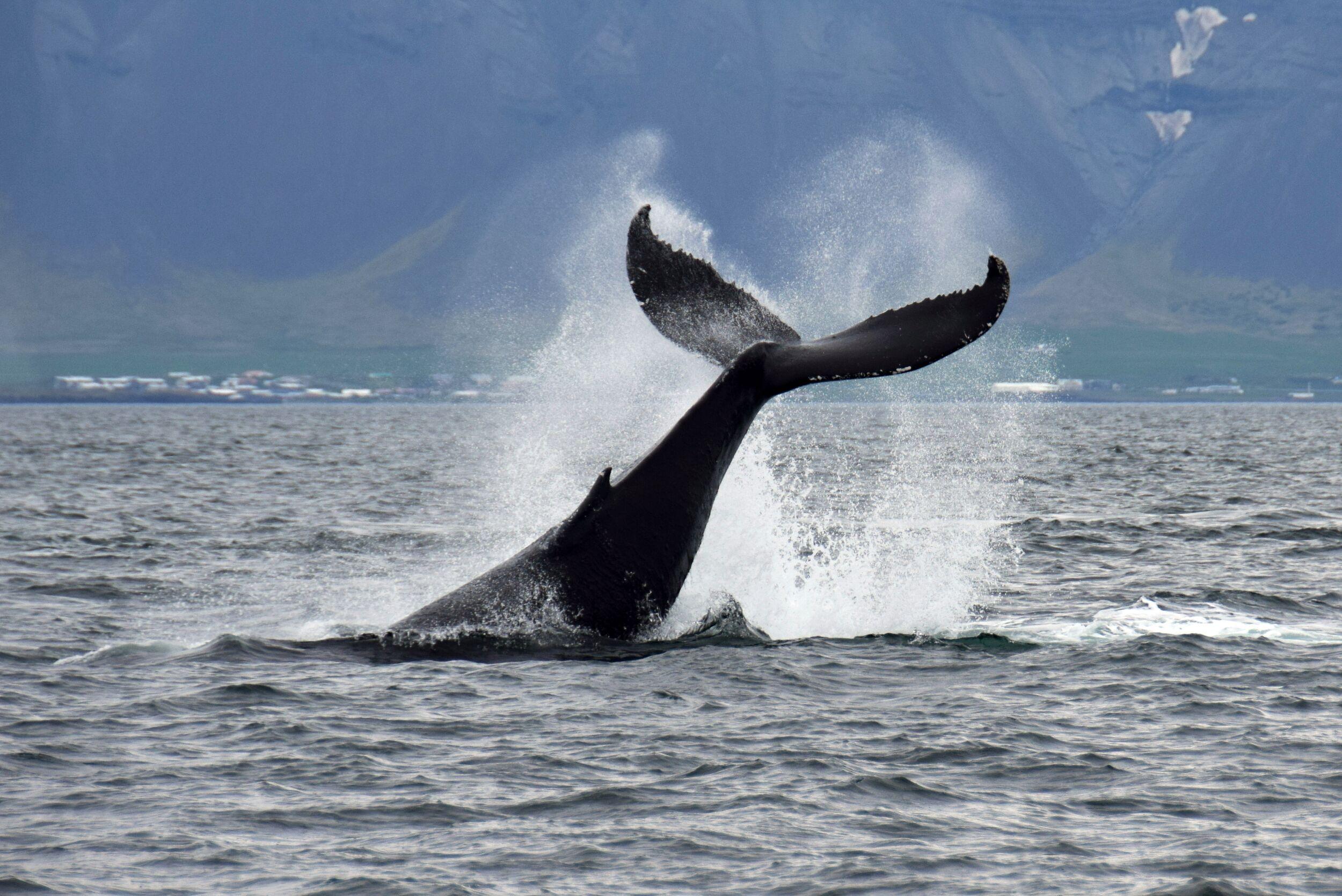
- Best Time to visit
- All year-round
- Coordinates
- 65.68311, -18.09076
- Distance frome Reykjavík
- 386km (240mi)
The Sights and Attractions of Akureyri
How to get to Akureyri
Iceland’s second-largest settlement, Akureyri is home to the country’s only other international airport apart from Keflavik. You can hop on a direct budget flight from London to Akureyri from November 2023. If you’re arriving into Reykjavík to start your Icelandic adventure, you can reach Akureyri by a short domestic flight from Reykjavík Airport (in the centre of the capital), taking just 45 minutes. If you’d rather keep your feet on the ground, there is a daily bus service between Reykjavík and Akureyri which takes around six hours depending on road conditions and weather.
Of course, you can always hire a car. Due to its small population, Iceland is an easy place for a self-drive adventure and Akureyri sits on the Route One main road that loops around the entire island. It’s a popular overnight stop for those road-tripping around the coast of Iceland and is a 388-kilometre (241-mile) drive from Reykjavík, taking around five hours without stopping.
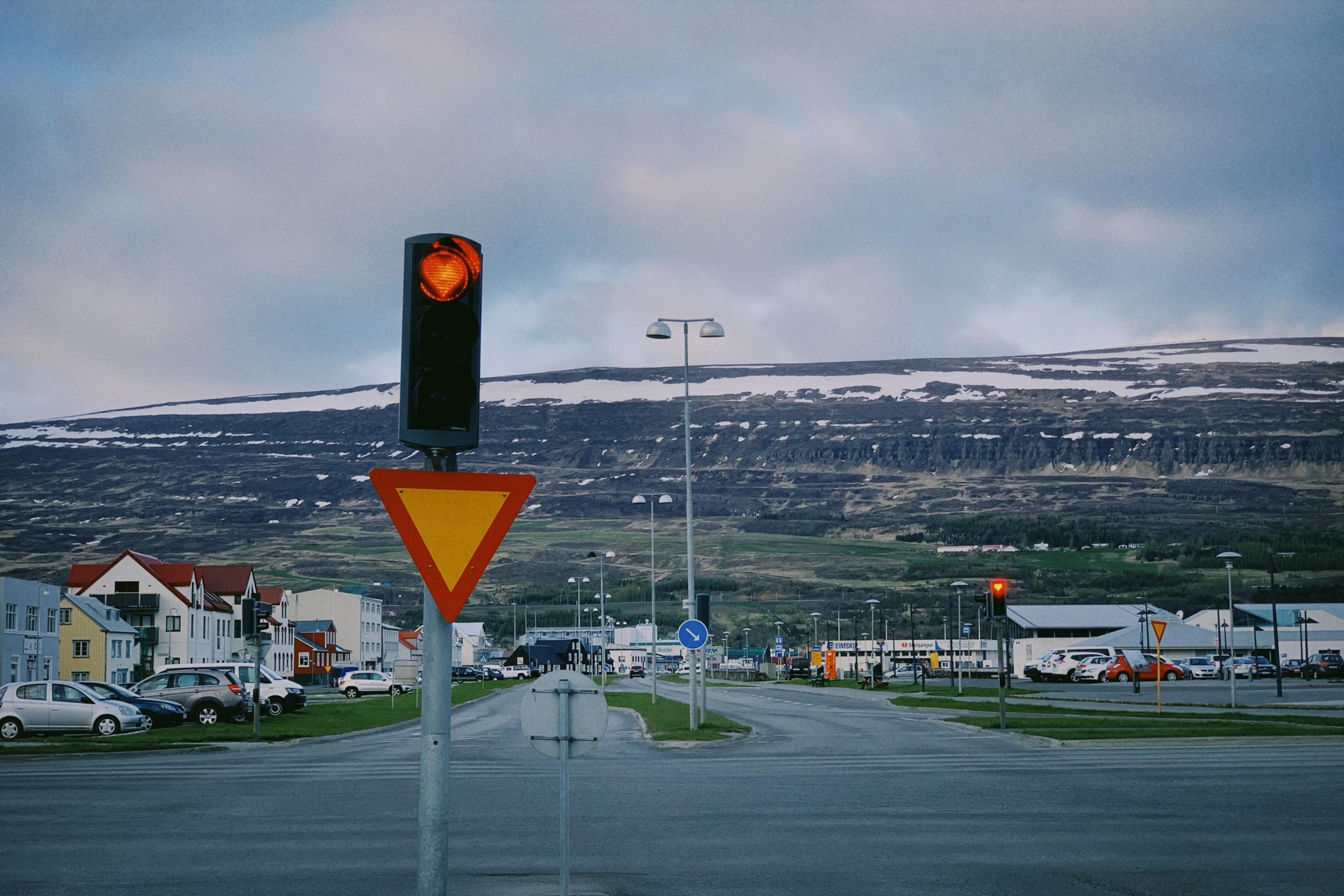
Staying in Akureyri
As there is so much to see and do in and around Akureyri, travellers often spend a few nights here. There is a range of accommodation options, from studio apartments with hot tubs where you can watch the Northern Lights as you soak to wallet-friendly beds in shared dorms in the centre of town. A handful of plush and simple hotels have every budget covered. There are also plenty of spots for dinner before you turn in for the night.
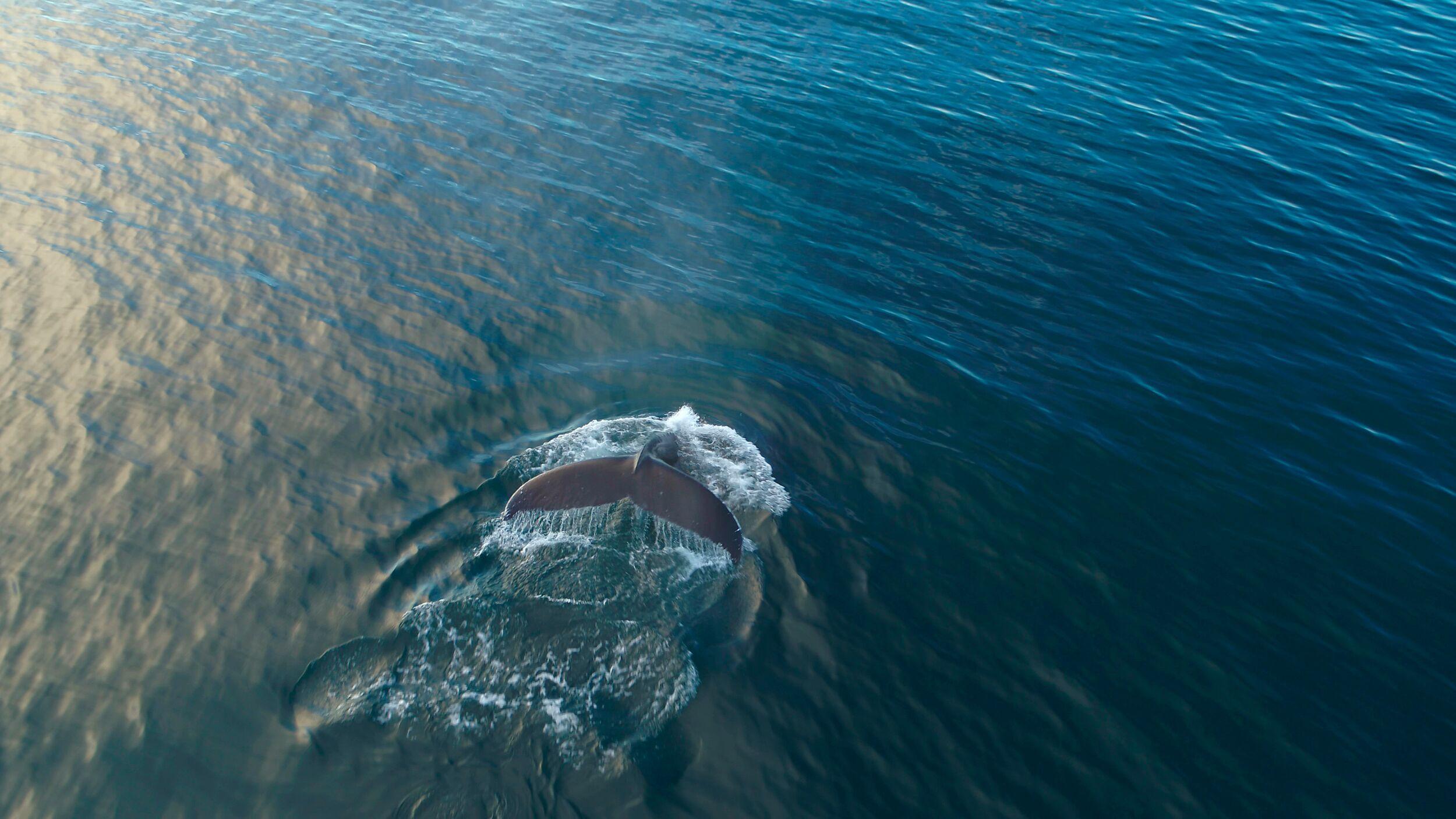
Attractions and Experiences in Akureyri
Up in the north of Iceland, it’s all about wildlife and winter sports. From Akureyri’s central harbour, you can join a whale-watching boat tour out into Eyjafjörður fjord. In these near-Arctic waters, you might spot huge humpbacks breaching the sea and casting spray in the air, or bottle-nose whales leaping across the waves. In the right season (winter or early spring), orcas have been known to make an appearance.
For an adventurous evening, hunt for the ethereal green glow of the Northern Lights in Akureyri. This natural phenomenon can sometimes be seen from Akureyri itself, reflected in the sea from the harbourfront. Aurora hunting tours leave from Akureyri, taking you out into northern Iceland’s vast plains and away from the city lights for a better chance of spotting the Northern Lights.
There are several attractions in the centre of Akureyri to keep you busy during the day. The Akureyri museum is packed with curios covering the history of the local area and walking up to the striking facade of the city’s main church – Akureyrarkirkja – is a must. Designed by the same architect as Reykjavík’s Hallgrimskirkja, it dominates the skyline in Brutalist drama. In summer, you can stroll through the botanical gardens where meandering paths weave through the flowers and you’ve got a view of Eyjafjörður stretching before you. It’s also got a fabulous selection of Arctic plants.
In the winter season, snow bunnies can get their kicks at Hlíðarfjall ski resort just 5 kilometres from Akureyri. This is Iceland’s main winter sports area and is home to miles of slopes for skiing and snowboarding and long cross-country tracks across the wilderness. It is generally open between November and March.
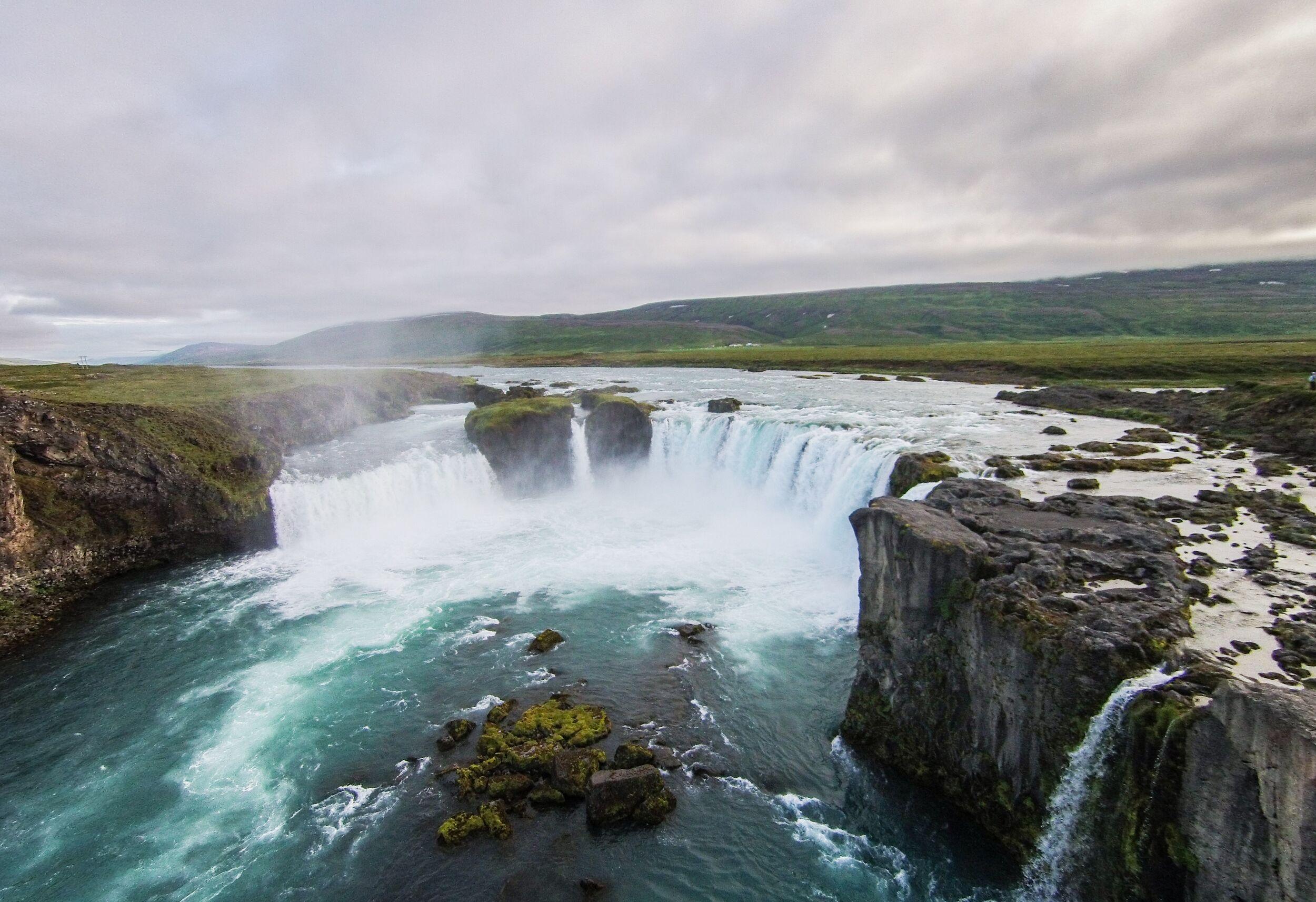
Day Trips from Akureyri
While whale-watching experiences run directly from Akureyri, you can also hop along the coast to the pretty fishing village of Húsavík, an hour’s drive away. Húsavík is known as the whale-watching capital of Europe and boat trips from the pretty-as-a-picture harbour have the highest success rate of spotting whales in Iceland. Plus, you can see some of the birdlife of Skjálfandi Bay along the way – razorbills, huge northern gannets and even a colony of puffins. Wandering the idyllic seafront of Húsavík is a delight in itself where the steepled wooden church sits against a backdrop of mossy-green hills and fishing boat putter in and out of the harbour.
North Iceland has its own “jewel route” like that of the Golden Circle. The Diamond Circle is a day trip route from Akureyri that takes in the natural wonders of the north. It takes around four hours to drive and passes by the thundering waterfalls of Goðafoss and Dettifoss, the sheer cliffs of Ásbyrgi glacial canyon and the beautiful landscape around Lake Mývatn. At Mývatn, you’ll find geothermal baths to rival the Blue Lagoon where the milky-blue water seems to glow against the landscape and you can slip into the warm water for a soothing soak. There are several geothermal hot spring experiences within day-tripping distance from Akureyri, like the Forest Lagoon and seafront GeoSea Baths and even the opportunity to bathe in heated tubs of beer at the Bjórböðin (beer spa).
All About Akureyri
Despite being a lot smaller than the capital, Iceland’s most northerly city has a distinct charm of its own. The second largest settlement in Iceland, it works as a great base to explore the north of the island and it has a wide selection of accommodation, restaurants, bars and shops. There are also plenty of museums and attractions in Akureyri – unique botanical gardens, whale-watching tours from the harbour and light pollution low enough to catch the Northern Lights in winter.
Akureyri is known as the capital of northern Iceland. It’s the largest settlement for miles and is home to the Akureyri Botanical Gardens, a unique church that dominates the skyline and a harbour where boats leave on whale-watching tours. Most visitors use it as a base to explore the nearby sights of Húsavík village, Goðafoss Waterfalls and the milky-blue geothermal lagoon at Mývatn.
With such a small population, and surrounded by wilderness and sea, Akureyri is an ideal place to spot the Northern Lights. Its location further north than Reykjavík means sighting the aurora is more likely in Akureyri on a clear night. It is possible to spot the Northern Lights between September and April in Akureyri.
Most visitors will spend at least one night in Akureyri. It sits on the northern section of the Route One ring road and offers the most options for accommodation and dining in the area. Since the north of Iceland has its own “jewel route” (similar to the Golden Circle in the south), it is worth spending two or three nights in Akureyri and dedicating a day to exploring the Diamond Circle, and/or visiting Húsavík for a whale-watching adventure.
Compared to the rest of Europe, Iceland is considered an expensive country to visit, but there are plenty of ways to keep to a budget if needed. Akureyri is slightly cheaper than Reykjavík, but there is not much difference.
As of 2023, Accommodation tends to cost an average of $175 a night for two people, a pint of beer is in the region of $9, and a standard meal in a restaurant tends to be around $20.
You can keep costs lower by staying in one of the hostels in Akureyri rather than a hotel, cooking meals yourself in the shared kitchen and hitting the free natural wonders out in the wilderness around Akureyri.
Akureyri is a small and very walkable city. There is a walking path along the fjord and riverside which is a delightful way to get from the centre of town and out into nature in a matter of minutes. You can even walk from the town centre to the international airport on the edge of the fjord if you don’t mind carrying your luggage for just over 3 kilometres (around a 40-minute walk).
One of the most popular activities in Akureyri is whale-watching tours from the harbour. You can spot all kinds of whales in the Eyjafjörður fjord around Akureyri, and some species swim up close to the city.
Taking a walk along the harbour front, you might see humpbacks breaching the surface, spot the sleek fin of a minke whale or encounter a friendly white-beaked dolphin. A little further out, you can spot orcas, blue whales and sperm whales if you’re taking a boat from the harbour.
There is a single-decker hop-on hop-off bus that leaves from Hof (the harbour) with a schedule that fits with cruise ships arriving and departing. The entire journey takes 45 minutes and includes 11 stops.
You can hop off at Akureyri’s main attractions – the striking church, the old town and Akureyri museum, the botanical gardens, and the central downtown area, where you’ll find restaurants serving hearty Icelandic fare and fresh seafood, and a handful of souvenir shops.
Further north than Reykjavík, the weather in Akureyri tends to be a little colder. However, the difference is not huge as Iceland’s proximity to the gulf stream keeps it warmer than the depths of the Arctic tundra at the same latitude.
In winter, you can expect it to drop to around -4°C, and in summer, it usually only reaches a high of around 14°C. As Akureyri weather is cold, you can expect to see some snowfall in winter, and the area around this northerly city is home to Iceland’s winter sports hub.
Whale-watching tours in the north tend to have the highest success rate in terms of spotting these majestic creatures. So, whale watching in Akureyri has a slight edge over Reykjavík in that respect. Reykjavík’s whale-watching tours tend to be more popular, mainly because of how easily accessible they are.
They run 365 days a year, and most visitors to Iceland stay for a few days in the capital. If you do find yourself in the north of Iceland, the little coastal village of Húsavík is considered the whale-watching capital of Europe and is around an hour’s drive from Akureyri.
Despite its northerly location, the Arctic Circle does not actually pass through Akureyri. There is only one point of Iceland that sits within the Arctic Circle and it is a small promontory on Grímsey Island. Akureyri is 100 kilometres (around 62 miles) from the edge of the Arctic Circle.
The distance between Akureyri Iceland and the North Pole is 2707 kilometres (around 1682 miles). However, when northern Iceland is coated in a thick blanket of snow, and you’re out in the wilderness with nothing but white before you, it can feel a bit like you’re at the North Pole.
Related Attractions
Related tours
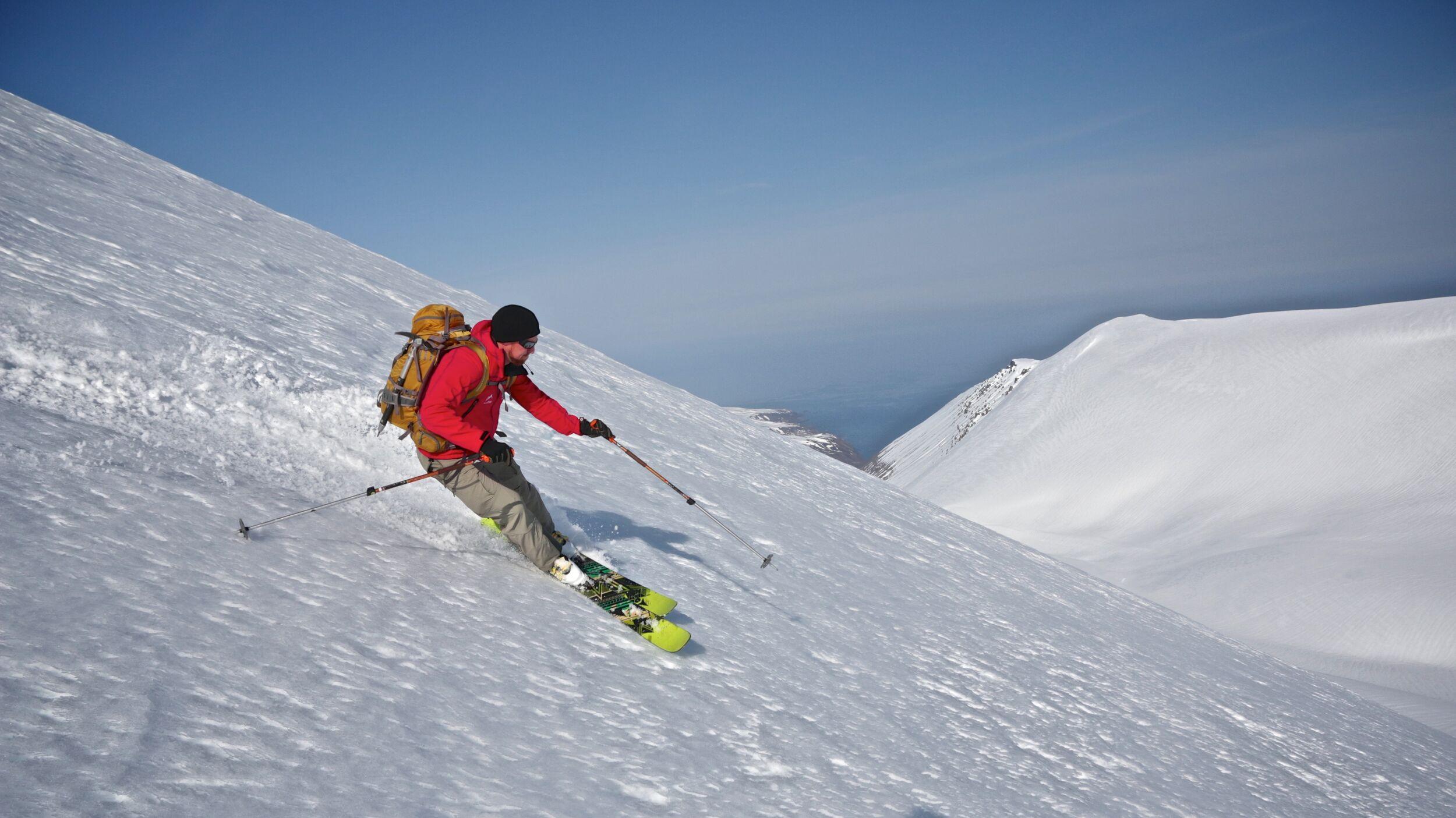
- Singles' Day Sale!
Mountains and Fjords of the North
Embark on an exhilarating 6-day ski adventure on Iceland’s legendary Tröllaskagi Peninsula. Known for its stunning fjords and challenging terrain, this tour is perfect for experienced skiers seeking the ultimate combination of epic runs, breathtaking views, and adventure.
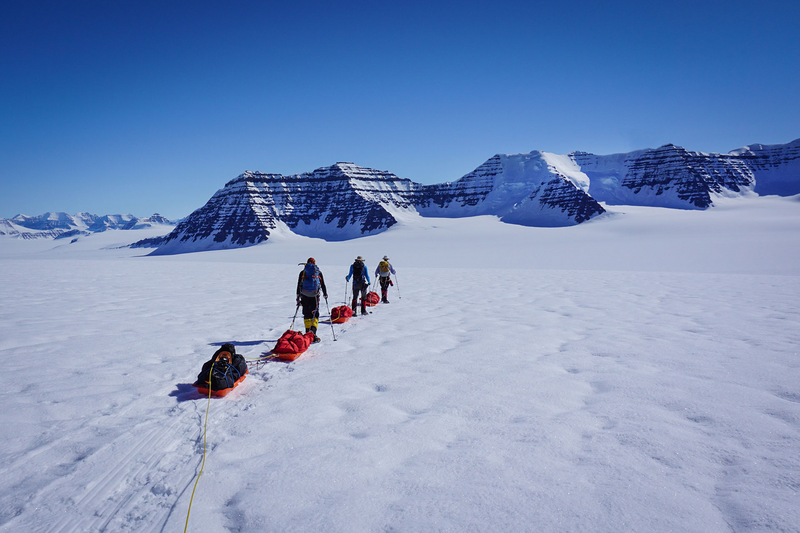
Mt Gunnbjörn, the Highest Peak in Greenland
Are you dreaming of an Arctic adventure of a lifetime? This 5-day tour has you scaling the highest peak of the Arctic (3694 m/12120 ft). Mt. Gunnbjörn has been called the 8th continental peak due to its massive size, and it beckons climbers from around the world. On the east coast, where towering mountains rise from the Greenland icecap, the conditions are pristine and similar to those in Antarctica. There’s nothing quite like challenging yourself to climb in one of the most isolated areas of the north, with the fresh Arctic air and stark white snow. An experienced and qualified guide will lead the group, keeping participants safe and informed. This is not a trek for a beginner as the hike is considered strenuous, and participants should have mountain climbing experience and be prepared to camp for four nights. Mt. Gunnbjörn is easily accessible on a ski plane from Iceland. Once in the Watkins Mountains, we set up a comfortable base camp at the foot of the mountain. To make the summit day more manageable, we establish one camp on the way to the summit. The climb can be done on snowshoes, with the last part done on crampons.


